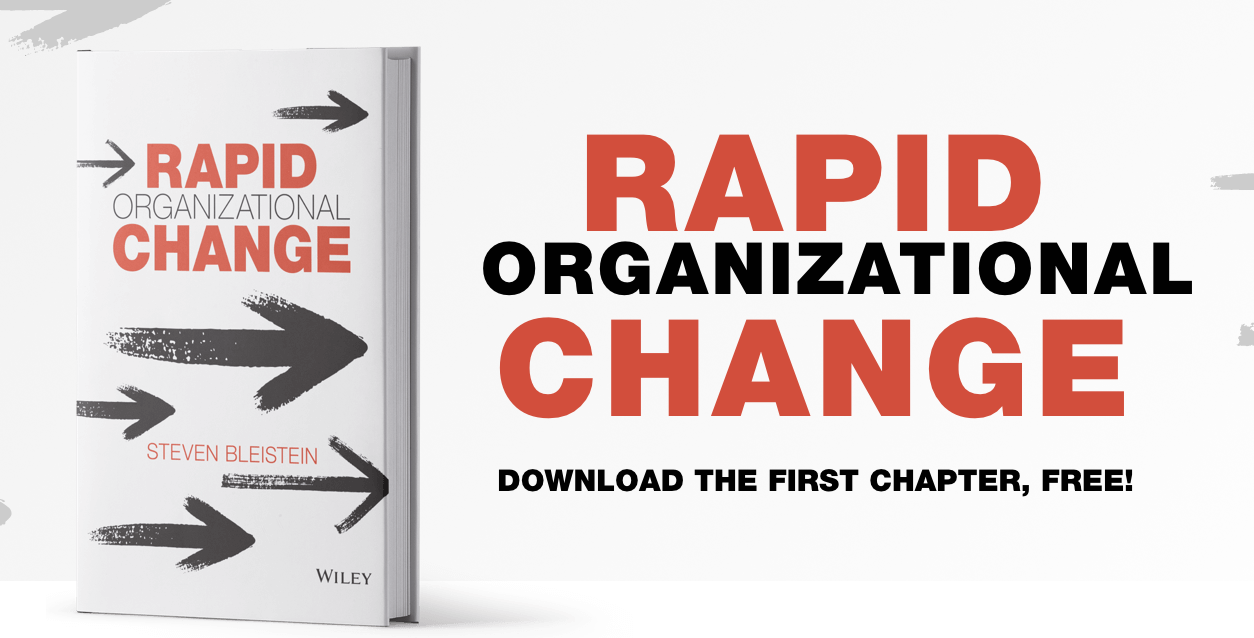[:en]
The CEO of a well-known US company in Japan contacted me recently to ask whether I thought flatter organizational structures are better than more hierarchical ones. He learned that vital information from the ranks was not getting to him fast enough and thought that a flatter structure might resolve the problem. He was, in fact, asking the wrong question, because his question presumes cause is organizational structure, whereas it might not be.
A more pertinent question would be why information flow is slower than he would like. I asked him that and he said it came down to two managers he felt were problematic for different reasons. In at least one of the cases, he realized that flattening the organizational structure would not help at all, whereas in the other, it is merely a band-aid that does not address the underlying cause, which lies with the manager.
There are only four reasons in the universe for a performance deficit in an individual, without getting into exceptional cases of mental health, such as depression.
- “I don’t know how to…”
- “I don’t want to…
- “Even if I wanted to I can’t…”
- Some combination of the three above
Treatment for each cause is different. You resolve “I don’t know how to…” causes with education. Note I say education here and not training. You train animals. People you educate, and there is a difference. See my video on this.
You address “I don’t want to…” by enlightening people about their self-interests.
The “Even if I wanted to, I can’t” cause is about structural impediment and resource lack. You address these by fixing processes, opening lines of communication, demarcating overlapping areas of authority, and providing sufficient budget, people, time, infrastructure, know-how and technology to name a few possible treatments.
I asked the CEO, which of the four he felt is cause for each manager. The CEO believes it is likely “I don’t want to…” for both.
The CEO had been ascribing a “Even if I wanted to I can’t…” solution to an “I don’t want to…” issue. So while flattening the organizational structure may allow lower level staff to circumvent their manager, it does not resolve the problem of the manager whom staff should not need to bypass in the first place. In addition, flattening the organizational structure only for this purpose is likely to result in a raft of other issues that he will need to address later.
The CEO agreed with me, but still feels that an organizational structure change is the best immediate solution for him. That may or may not be so, but at least now he can make his decision about what to do with a clear understanding of what causes the issue in the first place.
There is no way to address any problem without first understanding underlying cause. Share on X
My guess is that the CEO will ultimately need to deal with the “I don’t want to…” cause. Unlike good whiskey, such issues do not improve with time.
I suspect this CEO already knows that.
 [:ja]つい最近、有名な米国企業の日本支社のCEOより、階層的なものより、フラットな企業組織の方が良いと思うかどうかという質問を受けました。彼の会社では、大切な情報が下から企業内の階層を通じて彼に届くまでに時間がかかるという問題に悩んでいたため、フラットな組織に変えればこの問題は解決するかもしれない、と考えたのだそうです。しかしこの質問自体が間違っています。というのは、その問題の原因が企業組織にあるという仮定に基づいており、その仮定からして正しくない可能性があるからです。
[:ja]つい最近、有名な米国企業の日本支社のCEOより、階層的なものより、フラットな企業組織の方が良いと思うかどうかという質問を受けました。彼の会社では、大切な情報が下から企業内の階層を通じて彼に届くまでに時間がかかるという問題に悩んでいたため、フラットな組織に変えればこの問題は解決するかもしれない、と考えたのだそうです。しかしこの質問自体が間違っています。というのは、その問題の原因が企業組織にあるという仮定に基づいており、その仮定からして正しくない可能性があるからです。
この場合、なぜ情報の伝達が彼が望んでいるほど迅速に行われていないのか、というのがもっと適切な質問と言えるでしょう。彼にこの質問をぶつけると、問題のネックは、どうも二人のマネージャーにあると感じているとのことでした。その理由は別々のものでしたが、少なくとも一人目の場合は、組織をフラットにしたところで解決するものではないし、二人目の場合はそのマネージャー自身に原因があるため、フラット化は一時しのぎの解決策にしかならないということが、彼にも明白に見えてきました。
企業で個人に能力の問題が出てくる理由は、世界中どこにおいても以下の四つに限られます。(うつ病といったメンタルヘルスに関するケースは別ですが。)
- 「やり方がわからない。」
- 「やりたくない。」
- 「やりたくてもできない。」
- 上記三つの組み合わせのバリエーション。
これらの原因の対処法は、それぞれ異なります。「やり方がわからない。」というケースであれば、教育で解決できます。私はここで「トレーニング」ではなく「教育」と言いました。トレーニングは動物に対して行うもので、人は教育するものです。この違いは覚えておいて下さい。こちらのビデオをご参考いただければと思います。
「やりたくない。」という社員には、彼らが個人的に利益があると感じているエリアに焦点を当ててやる気を起こさせる方法が考えられます。
「やりたくてもできない。」は、構造上の障害物やリソースの欠落が原因です。プロセスの是正、コミュニケーションの促進、権威がオーバーラップしているエリアの境界の鮮明化、十分な予算、人材、時間、インフラ、ノウハウ、テクノロジーの供給、といった解決策が考えられます。
前述のCEOに、その問題のマネージャー達の問題はどれに当たるかと聞いてみると、どちらも多分「やりたくない。」というケースだと思われるという答えが返ってきました。
つまりこのCEOは、「やりたくない。」という問題に対し、「やりたくてもできない。」用の解決策を使おうとしていたわけです。企業組織をフラットにすれば、下のレベルの社員が上司を通さずに情報を伝達することは可能になるかもしれませんが、それでは最初から伝達から抜く必要などなかった上司自身の問題を解決することにはならないのです。その上、このためだけに組織をフラットにしてしまえば、そのことにより、また別の問題が後から湧き出てくる可能性もあります。
CEOは私の意見に賛成してくれましたが、それでもとりあえず目先の問題に対処するには企業組織を変えるのが一番であると感じているようでした。それが正しいかどうかはわかりませんが、少なくとも彼にはこの問題の根本的な原因がクリアになり、それに基づいて決定を下すことができると思います。
問題を解決するには、まずその根本的な原因を理解することが必須である。 Share on XこのCEOも最終的には「やりたくない。」という問題を対処しなくてはならなくなるでしょう。熟成したウィスキーとは違い、こういった問題は時間が経てば改善するというものではないのですから。
それは彼にもすでにわかっているだろうとは思いますが。
 [:]
[:]


